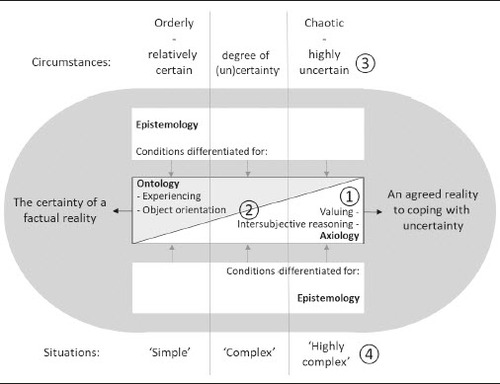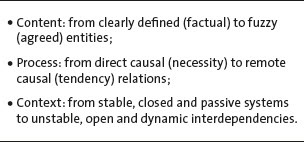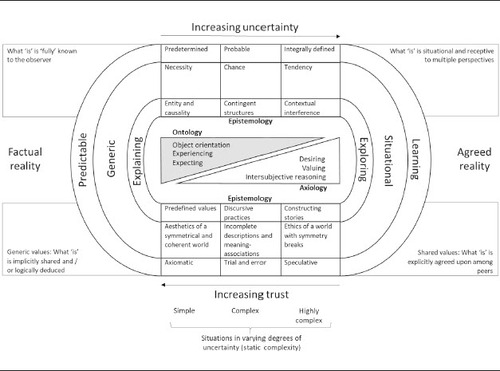Figures & data
Figure 1. The four propositions (1 to 4) central to this paper captured in one figure of relational space, which leads to differentiated epistemological, and interwoven ontological and axiological conditions to understand reality given the circumstances. For a complete elaboration: See text and .

Figure 2. Experiencing seen as a contingent relationship of three observations: entities (content), their interactions (process) and their interdependencies with the environment (context), which vary depending on the degree of uncertainty.

Figure 3. Capturing intersubjective valuing as a contingent relationship of three qualities (cognitive processing, reaching out and shared messages) that varies from certainty of knowing to understanding in uncertainty.

Figure 4. The complementary input of ontological and axiological competences shifts, depending on the degree of uncertainty (De Roo Citation2018), resulting in factual and agreed realities (A) and provided with behavioural conditions ( and ) associated with technical and communicative rationalities (B; De Roo Citation2016).

Figure 5. Epistemic loop with reflections and their relational implications for ontological and axiological questions and criteria, to differentiate among ‘realities’ from factual to agreed and vice versa.

Table 1. Ontological conditions differentiated in a range from ‘knowing’ relatively certain to uncertain situations, distinguished by the ‘observation focuses on [… 1 …]’ and ‘behaviour subject to [… 2 …]’, with ‘the product being [… 3 …]’ as a result.
Table 2. The axiology issue differentiated in a range from closed to open systems of meaning, distinguished by ‘interactions that build on [… 1 …]’ and a value system ‘referring to [… 2 …]’, which ‘result in [… 3 …] value statements’.
